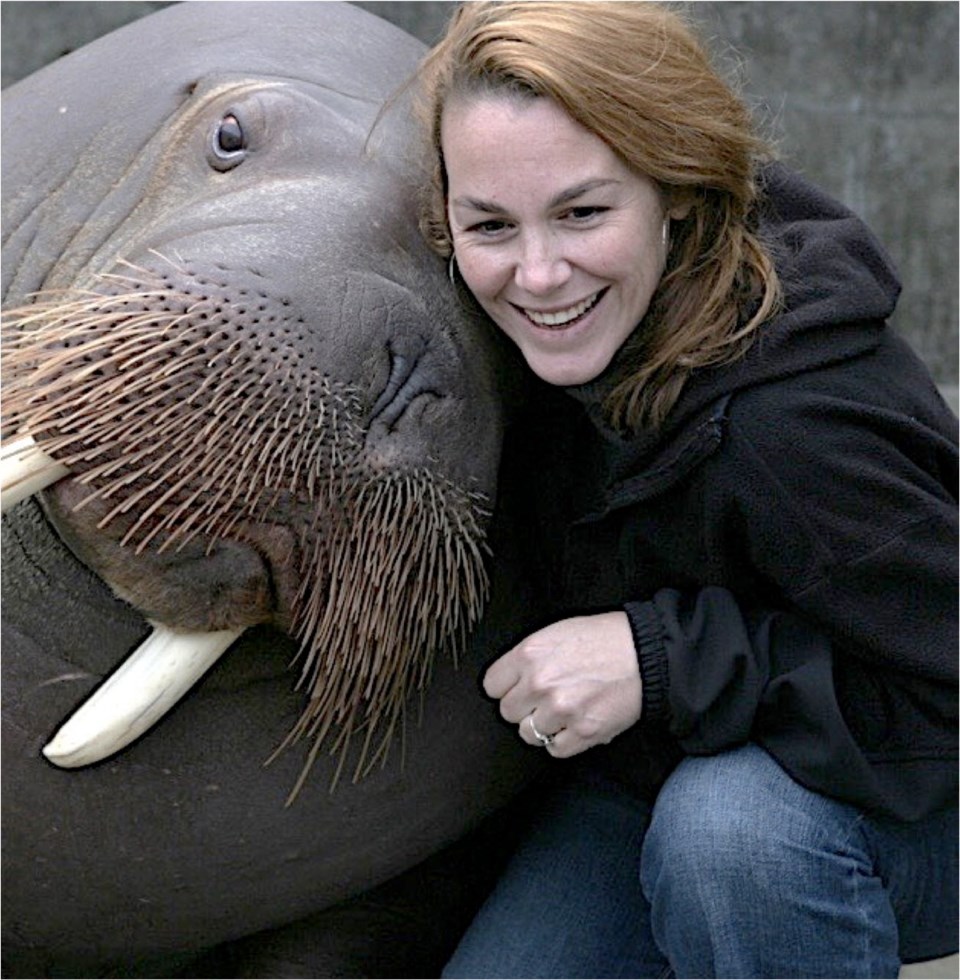When Sarah Robertson set out to make Sea Blind, her new documentary about the shipping industry and its effects on the Far North, it didn’t take long for her to admit she was entering uncharted territory.
This was surprising, since the Victoria-based filmmaker is no stranger to the Arctic. Although she has frequently journeyed there over the past two decades to document the migration of walruses and polar bears, she admits she felt out of her element this time.
“None of us knew anything about this subject going in,” says Robertson, whose new Arctic documentary morphed into a chilling exposé of the world’s most secretive, under-regulated and polluting industries.
“Even the [emissions] industry people came up to us and said they weren’t aware of these issues.”
Sea Blind, being shown tonight as part of an Earth Day event, 7-10 p.m. at Royal B.C. Museum, is chockful of dirty little secrets about the global shipping industry.
Who knew, for instance, that one reason global shipping costs are so low is because container ships are allowed to burn the dirtiest, cheapest fuel on the planet, heavy bunker fuel that emits black carbon or soot?
Seventeen of the largest container ships, we learn, emit more sulphur than all of the cars on the planet.
When black carbon, described as the second-leading cause of global ice melt, descends on glaciers and snow fields, they lose their ability to reflect light and heat, and they melt faster.
While the global shipping industry transports 90 per cent of consumer goods and 80 per cent of shipping takes place in the northern hemisphere, most of us don’t think about the downside.
Robertson and her collaborators — Dutch explorer and journalist Bernice Notenboom and Salt Spring Island editor and co-writer Jennifer Abbott — hope to change that.
“It was an eye-opener for me,” Robertson admits. “I realized very few people understand the scale of the shipping industry and how filthy it is.”
In one striking sequence, hundreds of running shoes from a spilled container are scattered along a beach in the northern Netherlands island of Terschelling, showing how close to home the problem has become.
“I like to use the running shoe as my symbol,” says Robertson, whose hour-long documentary explains why it costs just 12 cents to ship a pair of running shoes.
To illustrate the magnitude of the Oscar, the world’s largest container ship that is almost as long as four football fields, the film says that its 19,200 containers could hold 117 million shoes.
Robertson met Notenboom in 2014, not long after climate change cut short the Dutchwoman’s attempt to become one of the last adventurers to ski across the frozen Arctic sea ice from the North Pole to Canada.
Ironically, the receding ice that halted Notenboom is also creating a shipping route through the once impassable Arctic Ocean — a possible shortcut for the 100,000 ships that ply the world’s oceans.
The Northern Sea Route, as the trans-Arctic shipping route through Russia is called, could shave 10 days off a trip from China to the U.S. and save a company 10,000 tonnes of fuel.
“Shipping is always about moving our ‘stuff’ across the shortest distance,” says Robertson, whose film includes clips of George Carlin’s classic “Stuff” standup routine, computer graphics and stunning Arctic footage, including shots of polar bears swimming underwater and Notenboom hauling a 70-kilogram sled in Greenland.
The striking visuals offset the talking-heads footage as Notenboom interviews scientists, climate-change experts and shipping industry representatives.
Says Niels Bjorn Mortensen, head of regulatory affairs for Denmark’s Maersk Line, the world’s biggest container line: “Our main objective is to keep world trade going. We are simply the vehicle for world trade.”
Robertson, who travelled to eight countries over seven months, said it wasn’t that difficult getting shipping industry executives to speak.
“They do know they have to change and they want to be seen as greening up and being more sustainable,” she says. “They have an inkling if they don’t they’ll be crucified.”
Victor Boyarski, director of St. Petersburg’s Polar Museum, is among Russian interviewees who express pride in their heritage and Arctic ambitions via their massive coastline.
“Russia is North. Not Europe, not Asia, it’s North,” he says.
One of the film’s more bizarre revelations is how easy it is to find a cheap, “environmentally relaxed” country to register your container ship. Mongolia, of all places, is particularly popular.
While Robertson was thrilled that Sea Blind premièred during last year’s UN climate conference in Paris, she was disappointed to learn the shipping and aviation industries were excluded from the climate agreement.
“They’re so difficult to regulate,” said Robertson, who nevertheless offers hope by noting up to 40 per cent of Arctic melting could be slowed by replacing black-carbon emissions with cleaner alternatives.
“I think I have the ability to draw more people back into the climate-change narrative. You can get rid of black carbon in two weeks as opposed to CO2 that stays around for years.”
Sea Blind is already creating a buzz in Europe, with an Earth Day screening in Amsterdam, a showing in the Dutch parliament and in port cities to encourage the EU to increase pressure for emissions compliance.
